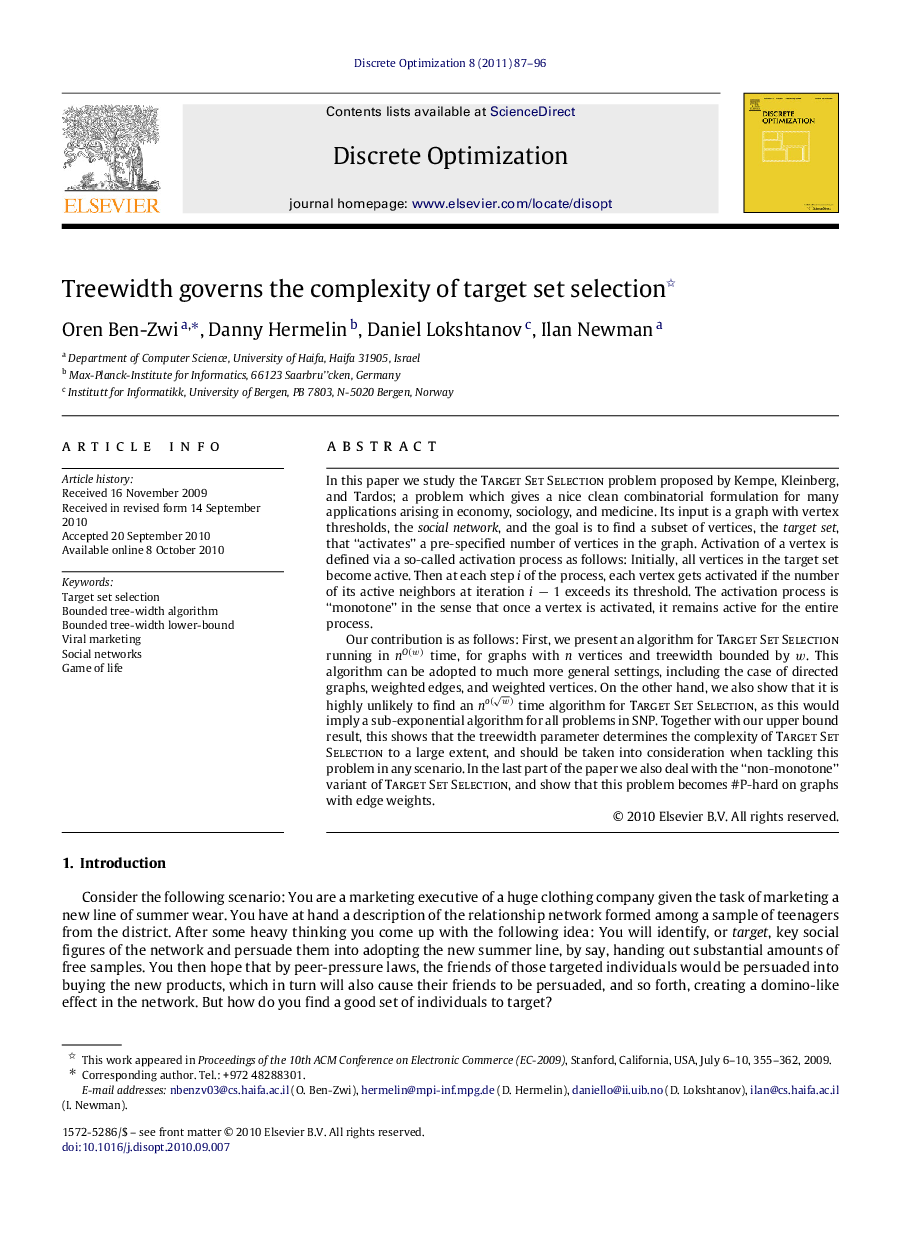| Article ID | Journal | Published Year | Pages | File Type |
|---|---|---|---|---|
| 1141537 | Discrete Optimization | 2011 | 10 Pages |
In this paper we study the Target Set Selection problem proposed by Kempe, Kleinberg, and Tardos; a problem which gives a nice clean combinatorial formulation for many applications arising in economy, sociology, and medicine. Its input is a graph with vertex thresholds, the social network, and the goal is to find a subset of vertices, the target set , that “activates” a pre-specified number of vertices in the graph. Activation of a vertex is defined via a so-called activation process as follows: Initially, all vertices in the target set become active. Then at each step ii of the process, each vertex gets activated if the number of its active neighbors at iteration i−1i−1 exceeds its threshold. The activation process is “monotone” in the sense that once a vertex is activated, it remains active for the entire process.Our contribution is as follows: First, we present an algorithm for Target Set Selection running in nO(w)nO(w) time, for graphs with nn vertices and treewidth bounded by ww. This algorithm can be adopted to much more general settings, including the case of directed graphs, weighted edges, and weighted vertices. On the other hand, we also show that it is highly unlikely to find an no(w) time algorithm for Target Set Selection, as this would imply a sub-exponential algorithm for all problems in SNP. Together with our upper bound result, this shows that the treewidth parameter determines the complexity of Target Set Selection to a large extent, and should be taken into consideration when tackling this problem in any scenario. In the last part of the paper we also deal with the “non-monotone” variant of Target Set Selection, and show that this problem becomes #P-hard on graphs with edge weights.
